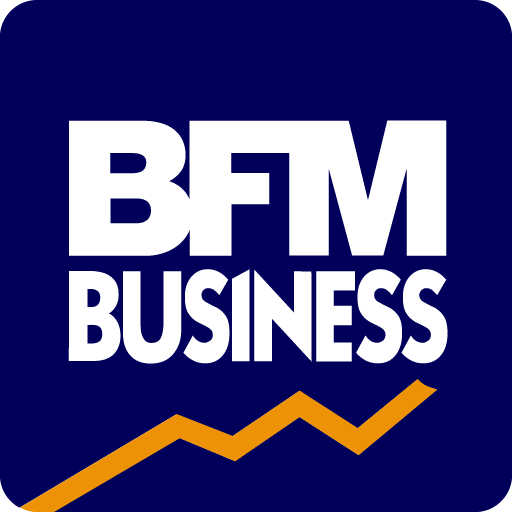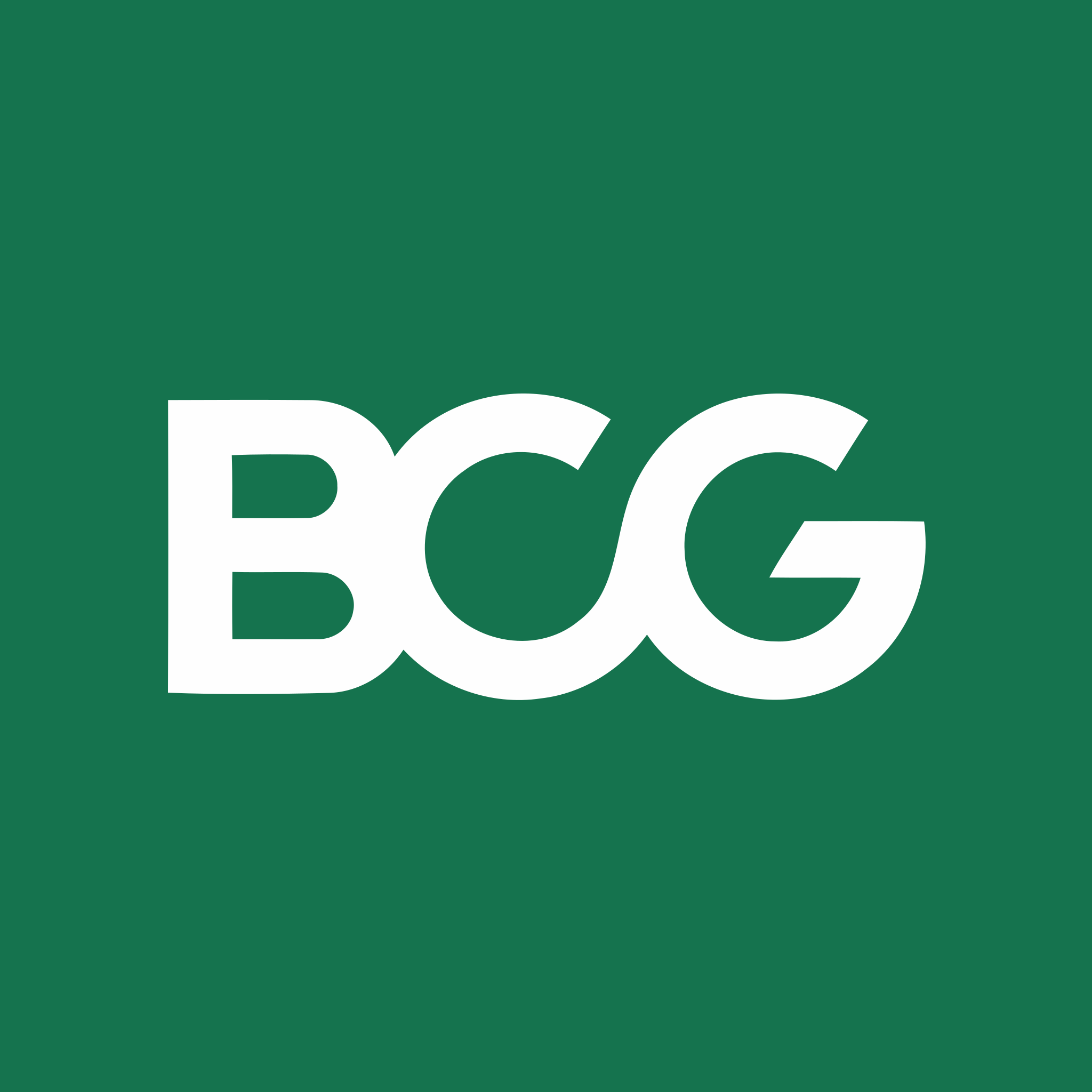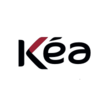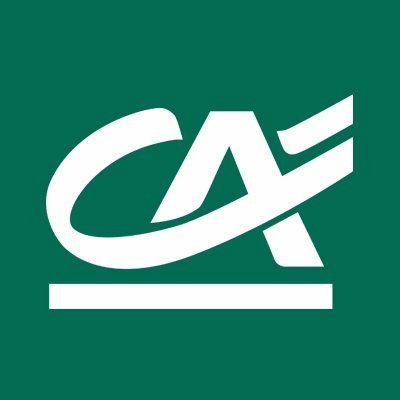Summary of our market study
to understand this market
Detailed content of our market study
 Inforamtion
Inforamtion
- Number of pages : 35 pages
- Format : Digital and PDF versions
- Last update :
 Summary and extracts
Summary and extracts
1 Market overview
1.1 Definition and presentation
The French brush market is characterized by its diversity: in terms of products, players, materials and manufacturing methods.
It encompasses several distinct categories:
-
Toilet brushes, for body care and beauty;
-
Fine brushes, which perpetuate French craftsmanship in make-up and art brushes;
-
Household brushes, used for domestic maintenance (floors, surfaces, crockery, etc.);
-
Paint brushes, including brushes and rollers, used in DIY and construction;
-
Industrial brushes, integrated into production lines for specific operations.
Historically based in the Oise and Jura valleys, the French brushmaking industry saw its industrial fabric eroded in the 2000s as a result of relocation, notably to China. Companies such as La Brosserie Française, a former subsidiary of the LVMH group, illustrate this trend: stricken by difficulties, it had relocated its production, before setting in motion a gradual relocation movement in recent years, driven by issues of quality, sovereignty and differentiation.
This revitalization of made-in-France products is part of a broader movement to move upmarket, embodied by brands such as La Bonne Brosse, which have succeeded in combining craftsmanship, noble materials and design to make brushes a desirable object. With sales of 100,000 units between 2021 and 2023, the brand bears witness to a growing demand for sustainable, aesthetic, responsible products - a gradual shift from a market historically dominated by functionality to a world of added value.
This shift is taking place against a backdrop of declining volumes, particularly in the hygiene and beauty departments. Toothbrushes, for example, although still massively used, saw their sales fall by -2% in volume, despite a +5.7% rise in value, essentially due to inflation. At the same time, painting remains the number-one DIY item in France, and paintbrushes are benefiting from the good health of this segment, driven by renovation work: 67.2 billion euros spent on maintenance-improvement in 2023, versus 47 billion in 2015.
However, the sector is based on a highly concentrated industrial structure. By 2024, four players will share the entire market: Vileda (25.9%), Elephant (27%), private labels (31.4%) and independent brands (15.7%). This structure reflects the weight of the major chains and buying groups, which impose tight pricing conditions and strong logistical competitiveness.
Geographically, business is equally concentrated. The Auvergne-Rhône-Alpes (11 companies) and Hauts-de-France (10) regions alone account for almost a third of the sector' s companies. Other regions, such as Brittany and Bourgogne-Franche-Comté, have fewer than three, reflecting an uneven industrial base.
Moreover, dependence on Asian imports, particularly Chinese, remains structural: 34.9% of French brushware imports come from China. This dependence, combined with rising production costs (particularly for shaped or standing wood, transport and energy), represents a major strategic challenge for Frenchchina is also the world's leading exporter, with $6,663 million worth of exports in 2023, more than 30 times the French level.
Finally, when it comes to exports, France remains focused on Europe: its top five customers - Germany, Spain, Belgium, Italy and the UK - together account for a significant share of its outlets. This strong regional positioning illustrates the importance of the intra-European market for French brushmaking.
In short, the French brushmaking industry is at the crossroads of several dynamics: relocation, upmarket, industrial concentration, dependence on imports and pressure on volumes. While the challenges are real, there is room for maneuver: through product innovation, differentiation, and the enhancement of national know-how.
1.2 The global market
global exports :
Leading brushmaking exporters World, ****, in billions of euros Source: ****
In ****, world trade in brushware will be highly polarized around a few major exporters. China dominates the market by far, with exports worth $*.** billion, several times the combined total of all its competitors. This hegemonic position is explained by China's strong industrial specialization and ability to produce very large volumes at low cost.
Far behind,Germany is the world's second largest exporter (***), Italy, Poland, the Czech Republic and Switzerland, all between $*** and $*** million. These European countries occupy a significant place, particularly in more technical or qualitative segments, but are unable to compete with Chinese production capacity.
The example of industrial brushmaking worldwide:
Trends and forecasts in the market value of industrial brushmaking World, ****-****, in millions of dollars Source: ****
The global industrial brushing market is growing steadily, with estimated sales of $*** million in ****, compared with $*** million in ****, an increase of +**.*% in three years. Forecasts point to a continuation of this dynamic: the market could reach almost $*** million in ****, a gain of a further **% between now and then.
This growth can be explained by several factors:
the increasing mechanization of industries, which use brushes for cleaning, polishing or surface treatment; the ...
1.3 The French market
The French brush market:
The dynamics of the French brush market vary according to the sources and segments observed. On the one hand, INSEE data on brush manufacturers show steady sales growth since ****, reaching €***.* million in ****, compared with €***.* million in **** and €***.* million in ****. This trend suggests a certain industrial recovery and the maintenance of production capacities, in a post-Covid context.
Sales of brush manufacturers France, ****-****, in Source: ****
At the same time, data from the distributor panel analyzed by LSA Conso show a slight contraction in the market in value, with sales estimated at €***.* million in ****, compared with €***.* million in ****, down *.*%. This downturn reflects the arbitrages made by consumers in the face of inflation, particularly in non-food segments such as household goods.
Brush market sales France, ****-****, € million Source: ****
The breakdown of national production according to Eurostat highlights the diversity of the brushing industry's outlets. Industrial brushmaking will account for **.*% of production value in ****, followed by paint brushmaking (***). The toiletry, fine brushmaking and other segments remain marginal.
Segment breakdown :
Market share breakdown France, ****, in Source: ****
These data illustrate a French market with a stable structure, but subject to pressure from domestic consumption. The maintenance of an active industrial fabric and the ...
1.4 Imports and exports
France's foreign trade in brushware is heavily dependent on imports, which remain structurally higher than exports. In ****, France imported ***.* million euros'worth of brushware, compared with ***.* million euros ' worth of exports, reflecting a persistent trade deficit inthis sector.
Since ****, imports have fluctuated between *** and *** million euros, peaking at ***.* million euros in ****. At the same time, exports have risen significantly, from ***.* million euros in **** to almost *** million euros in ****, an increase of over **% in six years. This dynamic reflects a certain strengthening of the competitiveness of French players in certain value-added segments, notably specialized brushes.
Brushware imports and exports France, ****-****, in millions of euros Source: ****
French imports of brushware are mainly from Asia and Europe. China dominates, accounting for **.*% of imports by value.Germany(***) complete the picture, with flows essentially intra-European for everyday consumer goods, while China remains unavoidable for entry-level products.
Breakdown of imports France, ****, in Source: ****
On the export side, France relies mainly on its European neighbors.Germany is the leading customer, absorbing **.*% of French exports, followed bySpain(***). The United States accounts for *.*% of sales. The company's presence in diversified markets is also noteworthy, with **.*% of exports going to "other countries", reflecting a partially globalized export strategy.
Breakdown of ...
2 Demand analysis
2.1 Strong growth in demand
**** and ****, two years of strong growth:
**** was the year of recovery for the brushmaking industry in France, with sales up **% between **** and ****. The sector has been largely driven by the health crisis and the demand for cleaning products, as individuals and companies have become more concerned with hygiene (***) since then. This is a record year for the brush industry. In ****, the sector saw a stabilization in sales, which is good news because demand has remained stable.
Today, the market leader, Brosse et Dupont, which owns the Elephant and Vileda brands, is forecasting record sales of *** million euros in ****, up **% on ****. But the situation hasn't always been the same.
A troubled sector in the ****s:
The sector experienced difficulties in the ****s and ****s, suffering from foreign competition, particularly from China, and numerous relocations took place. This was the case for Brosse et Dupont, which experienced major difficulties, was rescued in **** and then bought out by its employees in ****. [***]
Inflation in ****:
In ****, after a sharp rise in sales due to the health crisis, the brushmaking industry will have to contend with inflation, i.e. both rising costs and reduced demand, as the French are no longer prepared to spend as much ...
2.2 Demand for toilet brushes
Toiletries :
Sales trends in toiletries manufacturing France, ****-****, index base *** in **** Source: ****
The graph above shows that sales of toiletries have risen sharply over the past three years, which is good news for the brushmaking sector. In fact, sales will be **% higher in **** than in ****.
The example of toothbrushes:
*** million toothbrushes are sold every year in France, according to Les Echos, eight million of which are French-made. Demand for French toothbrushes is growing. Brosserie Française is the last company to manufacture toothbrushes in France (***), but this company, which experienced difficulties in the ****s and ****s against a backdrop of globalization and foreign competition, is now enjoying great success.
2.3 Demand for paintbrushes
Demand for paintbrushes is highly dependent on the dynamics of the construction sector, in particular painting, renovation and residential construction. These segments have enjoyed buoyant activity in recent years, but are now beginning to slow down.
Sales in the painting and glazing sector have risen sharply, reaching €**.** billion in ****, compared with €** billion in **** and €**.* billion in **** (***). This steady growth reflects the good health of the sector, which directly supports demand for brushes, rollers and other painting tools.
Sales in the paint and glazing sector :
Sales trends in the paint and glazing sector France, ****, in millions of euros Source: ****
Annual spending on major maintenance and improvement work has followed the same trend, rising from ** billion euros in **** to **.* billion in **** (***). This increase reflects households' enthusiasm for renovation, a key lever for the paintbrush market.
Spending on maintenance :
Trend in French people's annual spending on small maintenance jobs France, ****-****, in billions of euros Source: ****
While single-family and multi-family housing starts remained relatively stable between **** and ****, the trend is reversed in ****, with a significant drop: only ***,*** single-family homes and ***,*** multi-family homeswere started that year, compared with ***,*** and ***,*** respectively in ****.
Housing construction in France :
Number of housing starts France, **** - ****, in thousands of units Source: ...
2.4 Demand for household and industrial brushes
As regards household and industrial brushes, the latter two were mainly driven by growth in the cleaning sector in France. Indeed, demand for cleaning and hygiene services from households, businesses and industry alike has risen as a result of the Covid-** crisis, with the latter applying stricter sanitary protocols.
Sales growth in the cleaning sector France,****-****, in Source: ****
Demand for brooms rises during Covid, but stabilizes at a lower level thereafter
Sales of traditional brooms rise by **.*% between **** and ****. An **.*% increase in sales of floor and window mops between **** and ****. A **.*% increase in sales of brooms and accessories for crumbs and dust between **** and ****. Finally, sales of broom handles are up by *.*% over the year.
Source: ****
sales trends for brushware products France, CAM to April **, ****, in % Source: ****
2.5 The French DIY market: A major determinant of the brush sector
The DIY market is a key driver of demand for brushware, particularly for painting, renovation and home maintenance. The market has been growing steadily for over a decade, reflecting French people's growing interest in improving their living environment.
Size of the French DIY market France, ****-****, in billions of euros Source: ****
The sector's sales have risen from **.* billion euros in **** to ** billion euros in ****, marking continuous growth, with a notable acceleration from **** onwards. This dynamism is partly explained by the effect of home confinements, which have heightened the desire to refurbish and renovate the home.
French DIY market trends France, ****-****, in Source: ****
Annual sales growth shows a spectacular increase of +**% in ****, followed by +**.*% in ****, before stabilizing at +*.*% in ****. These peaks reflect a lasting change in consumer habits, with the French increasingly integrating DIY into their daily lives.
Top * jobs for which the French feel autonomous France, ****, %, %, %, %, %, %, %, %, %, %, %, % Source: ****
Painting appears to be the activity most practiced independently: **% of men and **% of women say they can do it themselves. This places painting far ahead of other activities such as tiling, electrical work or masonry, and confirms the structuring role of brushmaking in this segment.
Consumer price index for tools and other household ...
3 Market structure
3.1 Number of companies, number of employees and geographical distribution of activity
The entrepreneurial fabric of the brushmaking industry in France remains stable but limited. In ****, there will be ** companies active in the sector, compared with ** in ****, reflecting a slight erosion over the years. This contraction is not abrupt, but reflects a certain concentration of players, probably linked to growing demands for quality, innovation and competitiveness.
Number of companies in the brushmaking sector France, ****-****, in numbers Source: ****
This decline is accompanied by a drop in the number of jobs. The sector had *,*** employees in ****, compared with *,*** in ****, a loss of around *** jobs over twelve years. This trend confirms a rationalization of the workforce, perhaps accentuated by the automation of certain tasks, or the gradual disappearance of artisanal structures.
Number of employees in the brushmaking sector France, ****-****, in numbers Source: ****
The geographical distribution of companies shows a strong regional polarization. Three regions alone concentrate more than **% of the sector' s establishments: Auvergne-Rhône-Alpes (***), illustrating the uneven distribution of the sector's historical industrial roots.
3.2 Leading manufacturers
Leading companies :
The French brush market is dominated by a few major players, of which La Brosse et Dupont (***), illustrating a market relatively concentrated around a few well-established manufacturers.
Market share in value of the various players in the brush market France, ****, in Source: ****
Market share by value confirms this trend towards concentration: Vileda holds **.*% of the market, followed by Elephant(***), while private labels account for **.*% of the total. The remaining **.*% is divided between smaller, independent players. This reflects a fairly balanced structure between strong national brands and private labels.
Market share trends in value terms for the different players in the brush market France, ****-****, in % points Source: ****
Market share trends between **** and **** show a slight strengthening of Vileda's position, which gains +*.* points, in contrast to Elephant(***). This overall loss of the "Others" category confirms the difficulty small players have in holding their own against the major national brands and private labels in a market where visibility, distribution and innovation are key.
Players by product type :
The table below lists all member companies of the Fédération française de brosserie. We count ** member companies out of **, giving us a very precise and exhaustive view of the sector
Source: ...
3.3 Rising production costs
Rising overall costs:
Producer price index for brushware products France, ****-****, index base *** in **** Source: ****
The graph above shows a **% increase in producer prices for brushware in * year, between April **** and May ****. This increase should be put into perspective, as it is only **% in seven years (***), with prices having changed little between **** and ****. Nonetheless, today's brushmakers have to contend with inflation, which is felt in particular in the cost of raw materials.
Rising production costs are a central challenge for brush manufacturers. Among the first items to be affected are raw materials, particularly wood.
Price variation of standing timber France, June ****-June ****, in Source: ****
Standing timber prices fluctuated sharply between June **** and June ****. Ash rose by +**%, followed by Douglas fir (***). conversely, other species such as fir and spruce fell by -**%, maritime pine by -*% and Scots pine by -*%. These variations illustrate the considerable instability of supply costs, depending on the species chosen.
Price variations for shaped wood France, June ****-June ****, as % of sales Source: ****
For shaped wood, trends are similar: ash is up +*%, while softwoods are down -**% on average, and oak -*%. This price differential is prompting manufacturers to adjust their production lines according to the wood available ...
3.4 A bad patch for toothbrushes
Toothbrushes are currently going through a difficult period in the oral care market. In ****, this segment generated sales of ***.* million euros, far less than toothpaste, which peaked at ***.** million euros, and general oral hygiene at ***.* million euros.
Sales breakdown by oral care segment France, ****, € million Source: ****
The decline is particularly marked when we look at recent trends. Between **** and ****, sales of toothbrushes rose in value by +*.*%, but this increase masks a more worrying reality: volumes are down by -*%. In other words, consumers are still buying, but in smaller quantities, and higher prices are artificially supporting sales growth.
conversely, other segments are showing much more positive momentum. Toothpastes grew both in value(***).
Change in sales by oral care segment France, ****-****, in Source: ****
This contraction in toothbrush volumes could be linked to a number of factors: lower purchase frequency, longer usage times, and increased competition from electric models, often outside the scope of this category.
4 Offer analysis
4.1 Product prices
Source: ****
In this table, prices correspond to those of mid-range products and are those of the brands that dominate the market. Prices are for the year ****.
Wooden products are generally more expensive than platic ones, for example.
4.2 The different types of fiber
Fibers are the main material used in brushes, and can be metallic, syntetic, animal or vegetable in origin. Each fiber has distinct properties: degree of rigidity, degree of resilience, resistance to water, wear and heat. Some are crimped, others forked.
Metal fibers:
Metal fibers are mainly used in industrial brushing. Metals used are steel, brass and bronze. They are used for cleaning, polishing and polishing metals and jewelry. Metal brushes are also used in wood treatment. [***]
Synthetic fibers:
Synthetic fibers are the most widely used brushes today. The main synthetic fibers are polyamides, polyesters, polyvinyl chloride, polyethylene, polypropylene and different varieties of nylon. They enable us to imitate natural materials at lower cost and acquire new properties (***)[***]
Animal fibers :
Animal fibers are a traditional material (***) that is tending to disappear, due to the difficulty of handling. They are used for different types of brushes. [***]
Plant fibers:
Brushmakers use a wide range of plant fibers, representing the traditional character of brushes with wooden frames, while at the same time meeting users' environmental requirements. These fibers are made from couch grass, coir, tampico, rice straw or palm. [***]
4.3 The different types of brush mountings
The frame is the part of the brush where the fibers are implanted. It also includes the handle. Frames can be made of wood, plastic or metal (***). [***]
In this section, we estimate the share of wood frames in the total existing offer. There are no official figures for this, and the proportion of brushes with wooden frames varies widely from one brushmaker to another, from one distributor to another, and according to product type. We are therefore going to give the share of wooden brushes of certain product types among the market's leading distributors and manufacturers, to give a good idea of the structure of the offer.
Brooms :
At Elephant (***), France's market leader in brooms, around **% of the broom range is made of wood. The remainder are steel or aluminum brooms.
Toothbrushes:
At Bioseptyl, a subsidiary of Brosserie Française, one of the last toothbrush manufacturers in France, around **% of the toothbrushes on offer are alsomade of wood . Note that this figure is not representative of the French market (***).
Brushes for hairstyling :
At Glamour (***), around *% of the hairbrush range is made of wood.
Paint brushes:
**% of cod tails at Nespoli are made of wood.
Washing brushes:
At Elephant, around a ...
4.4 Renewing our offer: Digital and environment
The health crisis has certainly contributed to an increase in demand in **** and ****, but innovation and renewal of supply are also behind this rise in demand for brushes.
Hygiene:
As we saw earlier, hygiene has become one of consumers' main prerogatives in the wake of the health crisis. For example, Videla has launched a new *-in-* turbo wash kit that eliminates **% of bacteria and viruses.
Ecology, a key trend:
Products and packaging are turning to more eco-design.
Swiffer claims that for **% of non-users of its brand, the fact that its products are not considered ecological is the first barrier to purchase. Swiffer has relaunched its Swiffer Duster range of recycled-fibre brooms.
Paul Masquin, one of France's leading brush makers, has switched from plastic to cardboard or paper packaging for its products. It also innovates with recycled steel broom handles.
By ****, Elephant aims to manufacture ***% of its products in recycled plastic.
4.5 A new trend in the offer: upmarket brushmaking
While volumes are declining in hygiene and beauty departments, the brushware offer is undergoing a transformation marked by a move upmarket. Long seen as a functional category with little differentiation, brushware is evolving towards a more qualitative offering, inspired by the codes of luxury and well-being.
This trend is part of a dual context:
on the one hand, growing consumer demand for sustainable, aesthetic and locally manufactured products, on the other hand, a historically low buy-back rate for brushes, prompting brands to enrich their offering by focusing on experience and perceived value.
Several players are thus reinvesting in the foundations of French craftsmanship, once recognized on a European scale, particularly in the Jura andOise valleys, the historic cradles of brushmaking. Today, these regions are seeing the revival of workshops using noble materials (***) and manual techniques to produce durable, high value-added objects.
The La Bonne Brosse brand embodies this dynamic. Created in ****, it has brought this heritage back into the spotlight by focusing on ***% French handcrafted production, top-of-the-range materials and intricate design. Its brushes, priced from ** to *** euros, are conceived as durable and desirable objects, supported by a premium omnichannel strategy (***). the company alone has sold ***,*** units in two and a half ...
5 Regulations
5.1 Regulations and certifications
Regulations and role of the FFB (***):
The FFB brings together and represents ** brush manufacturers in France. Its aim is to coordinate and promote the activities of French brushmakers. It also manages social aspects through the collective agreement for mechanical woodworking. Brushmaking is legally part of the Mechanical Woodworking sector, as wood is the traditional material for brush frames. The FFB also acts as an interlocutor with the public authorities, negotiating the regulatory texts that apply to the profession.
European regulations :
The manufacture of brushes must comply with European food contact regulations on materials in contact with food.
Labels and certifications :
Five French brushmakers are EPV (***) and Bullier.
The PME+ label rewards companies' CSR commitments: use of sustainable raw materials, processing plant powered by green energy, ecological packaging, green spaces promoting biodiversity, employee well-being, etc. A number of French brushmakers have been awarded this label.
Regulations specific to toothbrushes :
Toothbrushes must comply with ISO *****, which sets out requirements and test methods for the physical properties of brushes.
6 Positioning the players
6.1 Player segmentation
6.2 The analyst's eye
Context:
The French brush market is dominated by four major groups: Vileda (***). This high level of concentration underlines the structuring around powerful leaders and the marked presence of supermarkets, which impose logics of low prices and volume optimization.
Major trends:
*st trend: China is the world's biggest exporter of brushware, exporting $*,*** million in ****, more than thirty times France's level (***).
trend *: French brushmaking exports are mainly directed towards European countries.Germany (***) are among France's main customers, underlining the importance of the intra-European market for French manufacturers.
*ᵉ trend: Toothbrushes stall in oral hygiene: while toothpaste sales rose by +*.*% in both value and volume, toothbrush sales fell by -*% in volume, although they rose by +*.*% in value. This deceptive rise therefore conceals a decline in physical sales, offset by an increase in prices.
*ᵉ trend: Renovation is driving demand more than new construction, with spending on major maintenance-improvement work reaching €**.* billion in ****, compared with €** billion in ****. conversely, the number of housing starts is falling: from ***,*** in **** to ***,*** in ****, a drop of **%in * years.
*ᵉ trend: Activity is highly concentrated in certain regions, with Auvergne-Rhône-Alpes (***) alone accounting for almost a third of brushmaking companies in France. in contrast, several regions, such as ...
- La Brosse et Dupont
- Nespoli France
- Marquardt (L'Outil Parfait)
- Max Sauer
- SOVB
- Loewerts Industries
- Pinceaux Leonard (Bullier)
- Ridremont
- Brosserie Brenet
- Bioseptyl (La Brosserie Française)
- Azema Bigou
- Savy Brosserie
- Brosserie Julio
- Brosserie Lecler Noël
- Brosserie Marchand
- Brosserie Thomas
- Devirieux
- Ets Barot
- Ets Paul Masquin
- Fournival Altesse
- GPT Cooperatif des Aveugles Travailleurs (Gcat)
- Henri Savy
- JM Brosserie
- Kibros
- Malige Raval'or
- Manufacture Brosses Marais Poitevin (Nbmp)
- Pinceaux d'Aquitaine
All our studies are available online in PDF format
Take a look at an example of our research on another market!
 Choosing this study means :
Choosing this study means :
Access to more than 35 hours of work
Our studies are the result of over 35 hours of research and analysis. Using our studies allows you to devote more time and added value to your projects.
Benefit from 6 years' experience and over 1,500 industry reports already produced
Our expertise enables us to produce comprehensive studies in all sectors, including niche and emerging markets.
Our know-how and methodology enable us to produce reports that offer unique value for money.
Access to several thousand articles and paid-for data
Businesscoot has access to all the paid economic press as well as exclusive databases to carry out its market research (over 30,000 articles and private sources).
To enhance our research, our analysts also use web indicators (semrush, trends, etc.) to identify market trends and company strategies. (Consult our paying sources)
Guaranteed support after your purchase
A team dedicated to after-sales service, to guarantee you a high level of satisfaction. +44 238 097 0676
A digital format designed for our users
Not only do you have access to a PDF, but also to a digital version designed for our customers. This version gives you access to sources, data in Excel format and graphics. The content of the study can therefore be easily retrieved and adapted for your specific needs.
 Our offers :
Our offers :
The brush market | France
- What are the figures on the size and growth of the market?
- What is driving the growth of the market and its evolution?
- What is the positioning of companies in the value chain?
- Data from several dozen databases
Pack 5 études (-25%) France
- 5 études au prix de 74 €HT par étude à choisir parmi nos 1200 titres sur le catalogue
- Conservez -25% sur les études supplémentaires achetées
- Choisissez le remboursement des crédits non consommés au terme des 12 mois (durée du pack)
Consultez notre catalogue d’études sectorielles


















